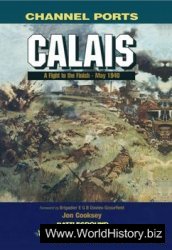Tierradentro is technically part of the Alto Magdalena, in the upper drainage of a major tributary to the Magdalena, the Paez River. It lies just to the north of the zone discussed above (Figure 21.1), but is distinguished from it by the presence of different (though related) ceramics and sculpture. Sedentary occupation was first established in Tierradentro at about the same time as in the Alto Magdalena (Langebaek, Dever, and Blick 2001). This Early 1 Period (1000-600 BC) occupation consisted of a small number of widely scattered farmsteads. In Early 2 (600-200 BC) the number of widely scattered farmsteads nearly doubled, but the total remained tiny. Production of salt from salty spring water apparently began, and may represent a degree of productive specialization that continues into subsequent periods. The population grew dramatically in the Middle 1 Period (200 BC-300AD) and was concentrated especially in the Quebrada San Andres (Langebaek, Dever, and Blick 2001), paralleling demographic processes in the Alto Magdalena at this time. The favored zone for settlement was at roughly the same elevation as that in the Alto Magdalena, and similarly consisted of the well-watered steep slopes of ridges and canyons interspersed with patches of more level land. The inhabitants of Tierradentro began to carve statues in a style with similarities to that of the Alto Magdalena; some, but not all, of the Alto Magdalena’s iconographic themes are represented as well (Sotomayor and Uribe 1987).
In the Middle 2 Period (AD 300-900) population levels soared to new heights, and nucleated villages became more common. Production of statues continued, but these are not regularly found in association with the villages. On occasion, they occur in less populated zones with severely looted artificial mounds that may have contained slab tombs, again recalling but not precisely duplicating those of the Alto Magdalena (Langebaek, Dever, and Blick 2001). As in the Alto Magdalena, some spectacular gold work is known from tombs, but it is rare, compared to other regions in southwestern Colombia. This period is taken to be the maximum development of hierarchically organized society, but the distribution of occupation corresponds less well to the agricultural productivity of the region’s soils than in earlier and later periods, suggesting that control over agricultural production was not an important basis of elite position (Langebaek, Dever, and Blick 2001).
Population continued to increase in the Late Period (AD 900-1650) and was more concentrated into villages than before (Langebaek, Dever, and Blick 2001). Production of statues apparently ceased, but the large subterranean tombs for which the region is famous (Figure 21.5) most likely date to this period (Chaves and Puerta 1986). These tombs provided for the secondary burials of considerable numbers of individuals in a funerary pattern that does not emphasize hierarchical social differentiation or much individuation at all through offerings, position, placement, or other features. Spanish colonial accounts describe Paez “chiefdoms” in the region, but the chiefs seem to have impressed the Spanish more with their wildness and fierceness in their remote mountain redoubts, than with their power and wealth. Leadership was fairly diffuse (Rappaport 1982). These ethnohistorically known groups, though, seem to represent patterns of organization rather different from their pre-Hispanic counterparts, either because of social change produced by colonization or because they moved into a largely depopulated region from elsewhere early in the Colonial period, and thus do not represent cultural continuity with the preHispanic past at all.

Figure 21.5. Subterranean tomb for multiple secondary burials in Tierradentro; the roof has collapsed, revealing side chambers (right and left) and entrance stairway (center). (Robert Drennan)




 World History
World History









